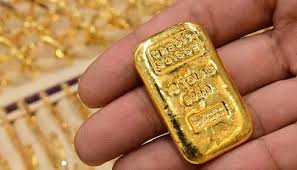Gold, often referred to as the “king of metals,” has captivated humanity for thousands of years. Its distinct luster, scarcity, and malleability have made it one of the most τιμη χρυσου 14κ ανα γραμμαριο σημερα substances on Earth. But beyond its physical characteristics, gold has been a symbol of wealth, power, and beauty, shaping cultures, economies, and global trade. As we delve into the rich history and ongoing relevance of gold, we uncover not just its role as a precious metal, but its place in human civilization.
The History of Gold: From Ancient Civilizations to Modern Economies
Gold’s history stretches back to the earliest days of recorded human civilization. Evidence of gold mining and usage dates back to 3000 BCE in regions such as Egypt, where it was crafted into jewelry and ceremonial objects. Ancient Egyptians even believed gold to be the skin of the gods, associating the metal with divine powers. Their pharaohs were buried with gold treasures to ensure their immortality in the afterlife.
By the time of the Greek and Roman empires, gold had already become a central part of trade and finance. Roman emperors minted gold coins, which became the foundation of the empire’s currency system. Throughout the medieval period, gold continued to play a central role in trade, with European kingdoms hoarding gold as a symbol of wealth and security.
The most significant moment in gold’s history, however, came in the 19th century with the establishment of the gold standard. Countries adopted gold as the primary backing for their currencies, a move that provided stability to international trade. The gold standard lasted until the early 20th century, but its legacy continues to shape the way we think about money today.
The Physical Properties of Gold: Why It’s So Valuable
Gold’s value is tied to its unique physical properties. As one of the least reactive metals, gold does not tarnish or corrode, making it an ideal medium for long-term preservation. It is also extremely malleable, meaning it can be shaped into intricate forms without losing its integrity. These properties make gold not only a symbol of wealth but a practical material for crafting jewelry, art, and even electronics.
Gold’s rarity also contributes to its value. While it is not the rarest element on Earth, it is found in such small quantities that it is difficult to mine. The concentration of gold in the Earth’s crust is about 0.004 parts per million, making its extraction labor-intensive and costly. This scarcity, combined with the demand for gold, ensures its enduring value.
Gold in the Modern World: An Investment and Store of Wealth
In the modern world, gold is not just a luxury item; it is a cornerstone of the global financial system. Investors view gold as a hedge against inflation and economic instability. When the stock market falters or currencies lose their purchasing power, gold often becomes a “safe haven” investment. Historically, during times of war or political unrest, the price of gold tends to rise as people seek a stable store of value.
Beyond its role in investment, gold is still a key component in many industries. In electronics, gold’s conductivity and resistance to corrosion make it an essential material for components such as connectors, semiconductors, and circuit boards. The growing field of renewable energy, particularly in solar panels, also relies on gold for efficient energy conversion.
Gold’s role as a symbol of wealth and prestige remains unchallenged. Jewelry is still one of the primary uses for gold, with billions of dollars spent annually on gold necklaces, rings, and bracelets. In many cultures, gold is considered an ultimate gift, symbolizing enduring love and prosperity.


